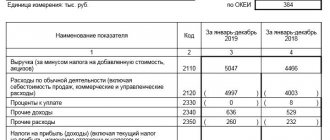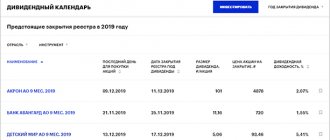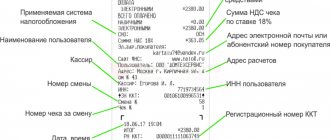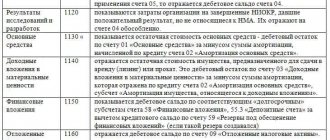*
One of the most important indicators when calculating UTII (single tax for individual entrepreneurs and LLCs) is the basic profitability. We talked about what imputation is and its main characteristics here (special taxation system - single tax).
The basic return for determining imputed income is determined by Section 346.29. The Tax Code of the Russian Federation is a constant indicator; in practice, to change it, it is necessary to make changes to the tax code itself, which is unlikely. So the basic return itself can be regarded as a constant indicator.
Another thing is physical indicators when determining imputation; by them the legislator means quantitative indicators on which the basic profitability is calculated, that is, in the field of consumer services this is the number of people. In practice it looks like this:
Basic profitability and physical indicator of UTII
The basic monthly profitability of an individual entrepreneur is considered conditional, since its size does not depend on the actual earnings of an individual entrepreneur.
The UTII profitability is assigned by the government for each type of business activity that falls under this tax regime per 1 employee/1 sq. meter of retail space/1 seat and other physical indicators that characterize each individual type of individual entrepreneur activity. The physical indicator of UTII is a combination of the above units that participate in production (in the provision of services).
Thus, both the size of the basic profitability and the value of the physical indicator for each type of entrepreneurial activity of an individual entrepreneur on UTII will be different.
The physical indicator for basic profitability can be numerically equal to the number of employees, the area of the premises in “squares”, and the number of seats.
The amount of basic income for a single tax on imputed income for 2020 is established by Article 346.29 of the Tax Code of the Russian Federation, which lists all types of activities with basic UTII income.
For convenience, all types of business activities, physical indicators and basic profitability (in rubles) are presented in the table at the end of the article.
Who can carry out activities under a special tax regime
UTII can be successfully used by business structures operating in areas the list of which is determined by regional acts.
Types of activities for which you can use UTII.
Business entities cannot use the special tax regime:
- whose activities are carried out in the service sector related to the organization of public catering in government institutions;
- having more than one hundred employees;
- carrying out their activities with the involvement of third parties on the basis of equity participation;
- belonging to the category of large taxpayers;
- making profit from leasing gas station facilities.
How to calculate UTII in 2021?
In order to calculate the UTII tax, you must use a special formula. One of the components of this formula is the basic yield.
Let's take a closer look at the formula for calculating the UTII tax.
UTII = (BD X FP X K1 X K2×15%), where: UTII is the amount of tax in rubles (for one month); BD - basic profitability established by tax legislation (for a certain type of activity); FP is a physical indicator of the activity of an individual entrepreneur (number of employees, area of retail premises, etc., depending on the type of services provided by the individual entrepreneur); K1 is the deflator coefficient, which is set for the year by the Government of the Russian Federation; K2 - adjustment coefficient, which is approved for each type of service (by local governments of the region), for a period of 1 year or more; 15% is the current UTII rate.
In 2021, K1 for UTII increased to 1.915. Consequently, the tax burden on entrepreneurs using UTII has increased in 2021 in terms of calculation and payment of UTII, which depends on K1.
K2 for individual entrepreneurs on UTII in 2021 can range from 0.005 to 1 points (the K2 coefficient can be clarified at the tax office).
K1 for 2021 will be determined approximately in November 2021. As soon as the Ministry of Economic Development of Russia publishes the corresponding order, we will definitely inform our readers about K1 set for 2021.
Due to the fact that individual entrepreneurs’ reporting on UTII is submitted quarterly, the amount of tax calculated using the formula is multiplied by 3 months.
The amount of basic income with “imputation”
What are the basic income levels of UTII in 2014? Article 346.29 of the Tax Code of the Russian Federation contains a complete list of “imputed” types of activities with their corresponding profitability coefficients and physical indicators. Here are some of them.
Basic profitability for services
- Household services (according to OKUN - a classifier of services to the population), ranging from cleaning to construction work, private lessons, veterinary medicine, etc. - have a DB equal to 7,500 rubles per employee. The FP is the number of all employees of the enterprise, including the individual entrepreneur himself.
- Car repair, maintenance and car washes provide a conditional income of 12,000 rubles per person, and the physical indicator is similar to the FP of household services.
- From the point of view of tax legislation, paid parking lots generate a conditional income of 50 rubles per “square” of parking area. The physical indicator is the footage of the car area.
- The freight transportation database is calculated for each transport unit in the amount of 6,000 rubles. When calculating imputed income, the number of all vehicles involved in the transportation of goods is taken into account, and there should be no more than 20 of them.
- Passenger transport (taxi, minibuses) has a profitability of 1,500 rubles per seat; accordingly, the physical indicator is the total number of seats in the passenger fleet of an enterprise, not exceeding 20 cars.
Retail profitability base
- Stationary retail facilities with an area of less than 150 sq.m (pavilions, shops) are subject to UTII based on a basic income of 1,800 rubles per unit of area. The calculation includes the footage of the sales area.
- Stationary retail without trading floors with a total area of up to 5 sq.m., that is, stalls, kiosks, tents, has a DB of 9,000 rubles per retail space. FP is equal to the number of such places.
- Stalls and kiosks, non-stationary retail outlets with an area of over 5 square meters. m work with a conditional profitability of 1,800 rubles, which is multiplied by the entire retail space in meters when calculating the tax.
- The database for vending machines selling retail goods is 4,500 rubles. The individual entrepreneur pays tax on all the devices he has.
- For outbound trading, the number of employees is taken into account as the FI, and the DB is 4,500 rubles for each of them.
Catering database
- The profitability of a public catering establishment (canteen, cafe, pizzeria) with a customer service hall of up to 150 sq.m. is 1,000 rubles per unit area. The size of the hall for visitors is taken into account as the FP.
- The DB and FP of catering services outside the stationary premises (lunches to the office, home delivery) are the same as for away trade.
Conditional profitability of advertising services
- An advertising agency that places advertisements for clients on transport pays UTII based on a base of 10,000 rubles for one vehicle involved. The amount of tax depends on the total number of such vehicles.
- Services for placing outdoor advertising on street structures are subject to tax based on the advertising surface area. Conditional income base - from 3000 to 5000 depending on the type of structure.
Rental services and UTII
- An individual entrepreneur engaged in leasing residential real estate (apartments, houses, hotels) uses a database of 1000 rubles per “square” when calculating tax. The total area of housing is taken into account, and it should not exceed 500 sq.m.
- Renting premises larger than 5 sq.m. for stationary trade and public catering is taxed at a base of 1,200 rubles per meter of area. FP – footage of the entire non-residential premises.
- For a taxpayer who owns land transferred for paid use for retail facilities, the size of the plot is important. With an area of up to 10 sq. m will be subject to UTII for the number of leased plots (BD = 10,000 rubles for each), over 10 sq.m - land area based on 1000 per square.
For any of the above types of services, an individual entrepreneur may lose the right to “imputation” if the number of its staff exceeds 100 people.
It is worth noting that certain types of activities fall under UTII, and not the taxpayer himself, registered as an individual entrepreneur. This means that an entrepreneur who has a wide range of services is forced to keep separate records for “imputed” and “non-imputed” types.
If there are several services included in UTII, taxes are calculated for each of them separately, but are entered into one declaration and are also paid in a single amount.
Current changes in UTII
The basic yield of the UTII tax for 2021 remains unchanged, but this does not mean that the amounts paid by individual entrepreneurs for UTII in 2021 will be the same in 2021. This is due to the fact that the formula for calculating UTII contains variable coefficients K1 and K2, as well as the fact that regional authorities are allowed to set the UTII tax rate themselves from 15% to 7.5%. Accordingly, in different regions of the Russian Federation the UTII rate will be different. Its size will depend on what kind of rate the local authorities will accept.
These authorities are:
- representative bodies of municipal districts;
- representative bodies of urban districts;
- legislative (representative) government bodies of federal cities of Moscow, St. Petersburg and Sevastopol.
Unlike K1, which is set at the federal level, K2 is allowed to be set by local authorities, but, as a rule, in most regions it is equal to 1, i.e. does not affect the amount of UTII.
The definition of K2 is presented in Art. 346.27 of the Tax Code of the Russian Federation (hereinafter referred to as the Tax Code of the Russian Federation) is an adjusting coefficient of basic profitability, which includes taking into account various features of doing business. K2 depends on the list of works provided, services or goods sold, seasonality and operating hours, the amount of income received, etc.
In some regions, K2 must be calculated using a formula approved by local authorities.
Reducing UTII by fixed contributions
Let us remind you that from 01/01/2017, an individual entrepreneur who has employees has the right to reduce UTII by the amount of fixed contributions paid to the funds within 50% of the calculated UTII.
Until 2021, individual entrepreneurs on UTII using hired labor reduced UTII only by contributions paid for employees within 50% of the calculated UTII; UTII was not reduced by contributions paid for the individual entrepreneur himself. In 2021, the rule for reducing UTII for insurance premiums will continue to apply.
VAT FOR UTII IN 2021
Law No. 335-FZ of November 27, 2021 determines that entrepreneurs using UTII can deduct value added tax on the following grounds:
- Art. 161 of the Tax Code of the Russian Federation (tax agents);
- Art. 174.1 of the Tax Code of the Russian Federation (simple partnership, joint venture, investment partnership, trust, concession).
Changes to UTII in 2021: draft law
Regarding this taxation system, it is worth noting that UTII was previously going to be abolished from the beginning of 2021. However, a draft law has been submitted to the State Duma for consideration, by which the validity of UTII should be extended until 2021, but, unfortunately, not for all types of activities. The draft law provides for leaving UTII only for individual entrepreneurs providing services to the population. How it will actually be, time will tell.
Another bill proposes amendments to the Tax Code of the Russian Federation (Article 346.27). The bill introduces a new formulation of the concept of “retail trade for UTII purposes.” If this amendment is adopted, then within the framework of UTII it will be impossible to sell goods that are subject to labeling in accordance with the legislation of the Russian Federation and (or) the law of the Eurasian Economic Union by means of identification. The Government of the Russian Federation, by its order No. 792-r dated April 28, 2018, approved the List of goods that must be labeled in 2021. This list includes a number of consumer goods - clothing, shoes, perfumes, etc.
To date, a positive decision on the use of UTII has been made for consumer cooperatives. From December 31, 2107, it was planned to prohibit this category of business from using UTII. But on the basis of clause 4 of Art. 3 of the Law of October 2, 2012 No. 161-FZ, as amended by the Law of October 30, 2021 No. 300-FZ, this deadline has been postponed until 2021.
We will inform our readers about any changes in legislation in a timely manner.
The material has been updated in accordance with changes in the legislation of the Russian Federation on September 14, 2019
Correction factors K1 and K2
K1, the so-called adjustment coefficient-deflator (i.e., taking into account inflation), established by federal legislation. Its value corresponds to the indexation of consumer prices for various categories of goods and services.
K2 – coefficient that determines the basic profitability (set by local authorities). This coefficient takes into account the specifics of doing business (list of goods and services), the frequency and time of work, the amount of income, regional characteristics, etc. The values of this indicator are determined by each subject of the Russian Federation annually and can range from 0.01 to 1.
This might also be useful:
- Calculation of UTII for less than a month in 2021
- Changes in UTII for individual entrepreneurs in 2021
- UTII for individual entrepreneurs in 2021
- Codes of types of entrepreneurial activity UTII
- Retail trade on UTII in 2021
- What taxes does the individual entrepreneur pay?
Is the information useful? Tell your friends and colleagues
Dear readers! The materials on the TBis.ru website are devoted to typical ways to resolve tax and legal issues, but each case is unique.
If you want to find out how to solve your specific issue, please contact the online consultant form. It's fast and free!
Who should pay this tax
In the previous year, namely from 07/04/2014, the Federal Tax Service approved the entry into force of a new form of tax return for UTII for organizations and individual entrepreneurs. It is worth noting that it came into force only this year. Entrepreneurs will submit a report on it only based on the results of the third quarter of 2015.
The Ministry of Finance clarified that UTII in 2015 is not provided for individual entrepreneurs and organizations in the case when the seller of a product first shows it to buyers in one place, and issues and carries out all related payments in another. The Ministry regards this type of economic activity as trade by sample. Therefore, for such entrepreneurs the simplified tax system or the general system is used.
Regarding individual entrepreneurs, the tax can be reduced if the individual entrepreneur makes fixed contributions. These changes specifically affect the period of payment of these contributions. Also, tax legislation does not provide for the distribution of the amount paid throughout the year.
Comments
Gamlet 02/15/2016 at 01:33 pm # Reply
... Everything that is convenient for people should definitely be cancelled. Miracle Country...
Tatyana 03/22/2016 at 09:33 # Reply
SP
Is a 10 m2 tent considered a sales area?
Natalia 03/22/2016 at 01:54 pm # Reply
Tatyana, good afternoon. The concept of a trading floor is defined by the Tax Code of the Russian Federation, Article 346.27, I quote: “the area of a trading floor is a part of a store, pavilion (open area) occupied by equipment intended for displaying, demonstrating goods, conducting cash payments and servicing customers, the area of cash registers and cash registers cabins, the area of working places for service personnel, as well as the area of aisles for customers. The area of the trading floor also includes the rented part of the trading floor area. The area of utility, administrative and amenity premises, as well as premises for receiving, storing goods and preparing them for sale, in which customer service is not provided, does not apply to the area of the trading floor. The area of the sales area is determined on the basis of inventory and title documents;" My opinion is because The area of the sales floor can be determined on the basis of inventory and title documents, but in relation to the tent, such documents simply do not exist, because a tent is a temporary structure, then the answer to your question is no.
Dilik 10/27/2016 at 08:32 pm # Reply
More than 5 m2, it counts as a service room, but since it’s a tent, I don’t know)
Rosalia 04/23/2016 at 10:11 am # Reply
How to properly allocate an area
How to correctly allocate an area for calculating the UTII if a room of 50 sq.m also contains the entire assortment and passage of buyers and the seller’s area?
Nail 07/05/2016 at 18:48 # Reply
I bought a Hyundai bus with 19 seats and will service it on my own. The company delivers shifts as an individual entrepreneur. I wanted to find out what is the price of K2 in Kazan
Natalia 07/06/2016 at 08:16 # Reply
Nail, good afternoon. When providing motor transport services for the transportation of passengers, for individual entrepreneurs working in Kazan, K2 is set to 0.5 for the purpose of calculating UTII.
Marina 11/10/2016 at 11:43 am # Reply
Salt mines - do household services fall under UTII?
Hello. Salt mines - do household services fall under UTII? Region 34-Volgograd. Thank you.)
Natalia 11/13/2016 at 01:19 pm # Reply
Marina, good afternoon. UTII when providing services - salt caves cannot be used. The list of permitted types of activities under UTII is specified in clause 2 of Article 346.26 of the Tax Code of the Russian Federation; regional authorities cannot expand it.
Anastasia 01/16/2017 at 11:50 # Reply
In accordance with Federal Law No. 178-FZ dated June 2, 2016, the UTII tax regime has been extended until January 1, 2021. How come you wrote the last update on November 29, 2016?
ostapx1 01/16/2017 at 11:52 am # Reply
What exactly bothers you?
11/21/2017 at 04:37 pm # Reply
Question
Hello. Tell me, please, does the construction of cottages fall under UTII - the provision of services to the population?
11/21/2017 at 5:45 pm # Reply
Construction of cottages - OKVED code 41.20.30 falls under UTII.
12/05/2017 at 20:51 # Reply
Hello! Is OKVED 93.29.9 suitable for UTII taxation? In my case, these are educational and entertainment devices for children.
12/05/2017 at 21:45 # Reply
Good afternoon. OKVED code 93.29.9 by Order of the Government of the Russian Federation of November 24, 2016 N 2496-R is classified as household services, therefore, it can be used for UTII.
Types of business where the DB is calculated based on the number of means of production with UTII
- Freight transportation. The basic profitability of transport companies engaged in transportation by road is calculated from the number of vehicles employed in this activity.
- Firms providing passenger transportation services calculate traffic volume based on the number of seats for passengers in the vehicle.
- Enterprises that use vending machines in their activities calculate the basic profitability from the number of such machines.
- Advertising companies placing advertisements on transport calculate their base profitability from the number of such vehicles for advertising.






